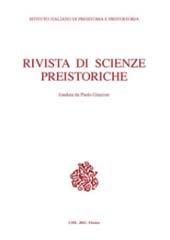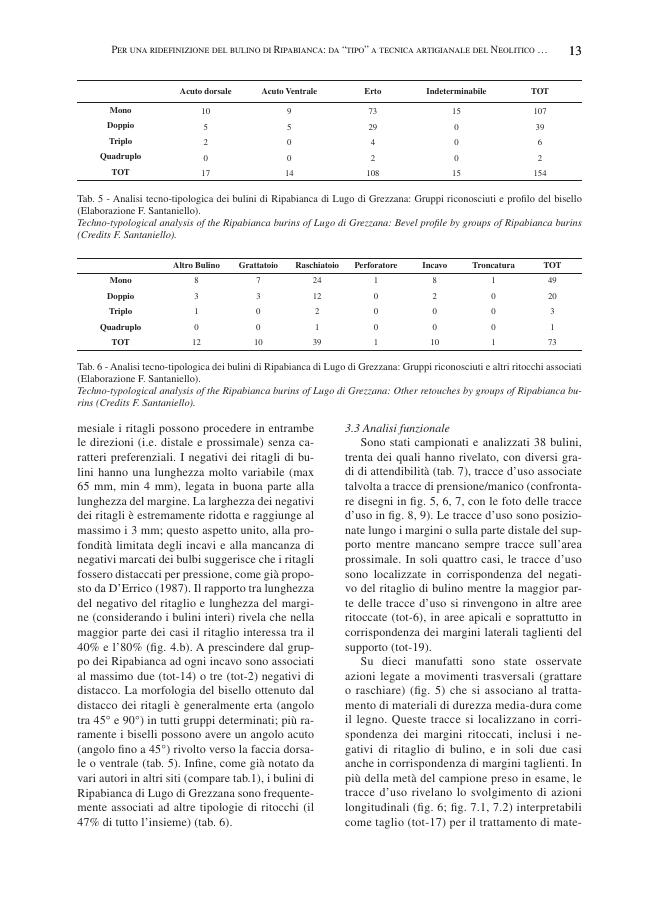Per una ridefinizione del bulino di Ripabianca : da “tipo” a tecnica artigianale del Neolitico antico padano-alpino
P. 1-25
Burins are one of the most investigated tool types because of their wide morphological variability and their recurrence in prehistoric lithic assemblages. Over recent years, new approaches have reconsidered Paleolithic burin types aiming to overpass the traditional typological definitions. This allowed to re-discuss the significance of the burins as well as to refine our knowledge about human behavior. On the contrary, Neolithic burins are rarely studied from cutting edge approaches, not allowing a more comprehensive understanding about these stone tools. In this perspective, Ripabianca burin provides a perfect case study. The earliest Ripabianca burin has been recognized in the eponymous site of Ripabianca di Monterado during the 60's; since then, Ripabianca burins have been found in several sites located between the Alps and the Po' plain and attributed to different chrono-cultural facies of the Italian Early Neolithic.
To this day, the studies conducted on Ripabianca burins revealed clear typo-technological recurrences in association with differences in use wears. At this regard, we analyzed the Ripabianca burins from sector XIII of Lugo di Grezzana (Verona, Italy) by means of a techno-functional approach. This method links technical features and use wear data to identify the tool potential as well as to understand human skills and behaviors behind the tool itself. Our data, compared with those found in the north Italian scenario, allow to reconsider the significance of the Ripabianca burins as a “craft technique” within the economy of the Early Neolithic. [Publisher's text]
Forma parte de
Rivista di scienze preistoriche : LXXI, 2021-
Artículos del mismo número (disponibles individualmente)
-
Información
Código DOI: 10.32097/1145
ISSN: 2282-457X
KEYWORDS
- Neolitico antico, Lugo di Grezzana (VR), Analisi tecno-funzionale, Storia dei bulini, Bulino di Ripabianca
- Early Neolithic, Lugo di Grezzana (VR), Techno-functional analysis, Burins history, Ripabianca burin



